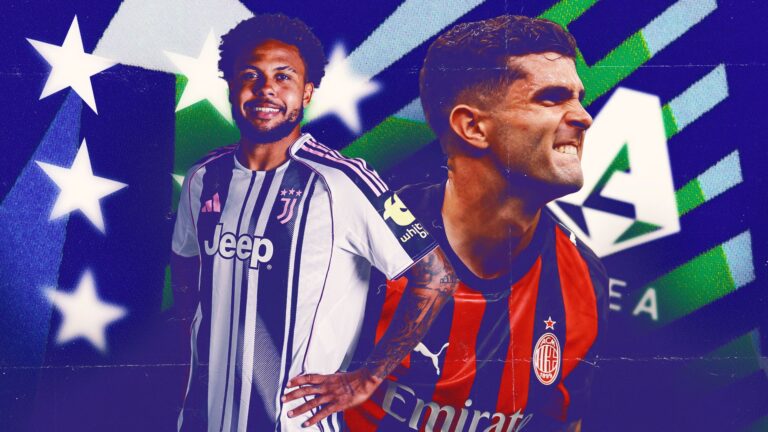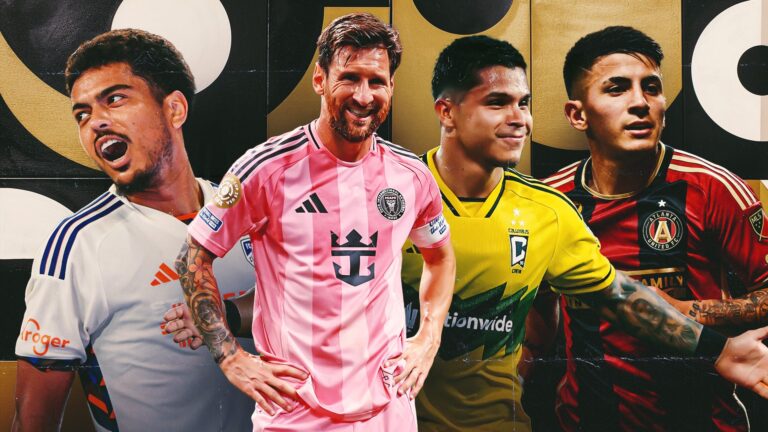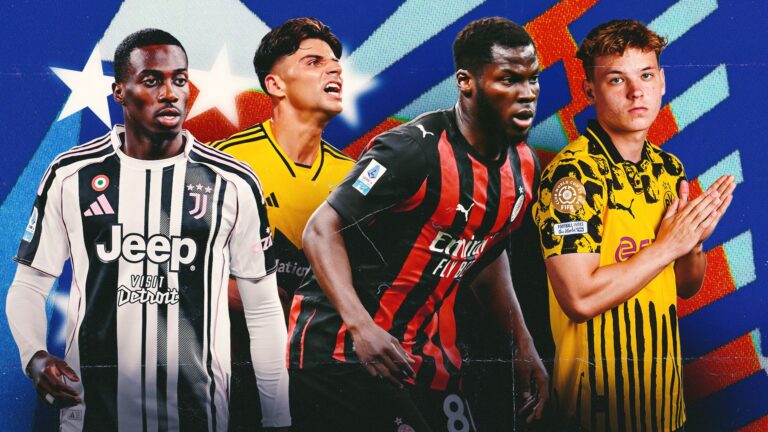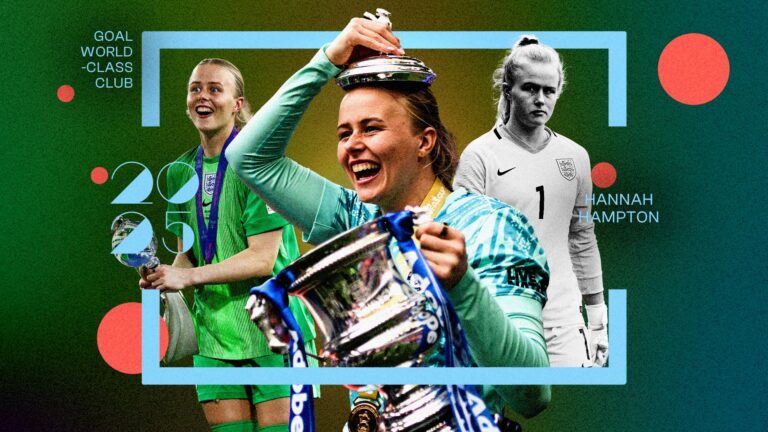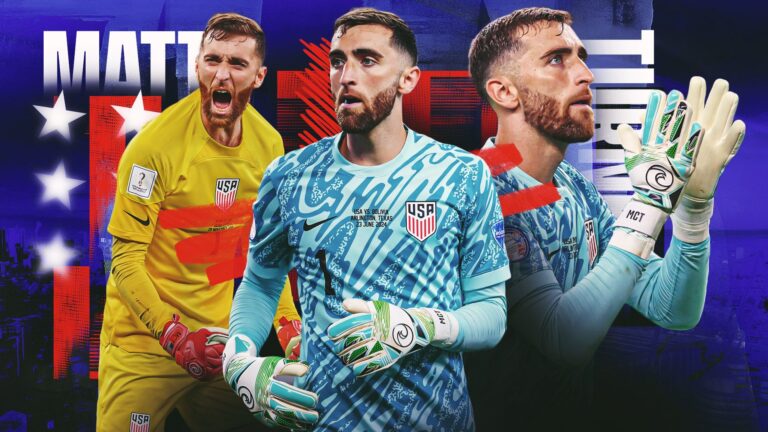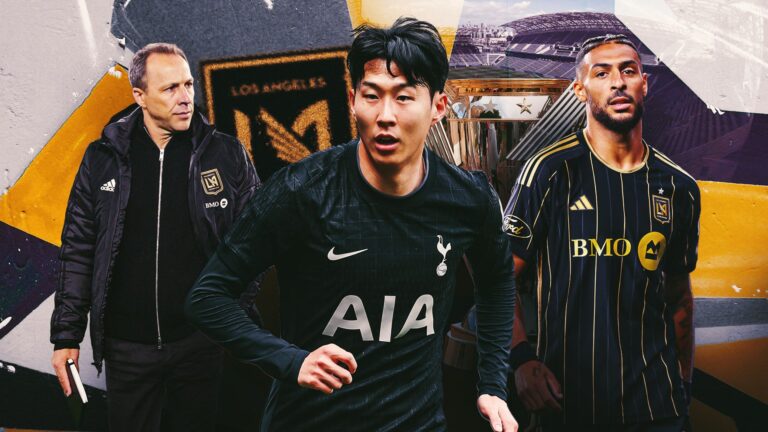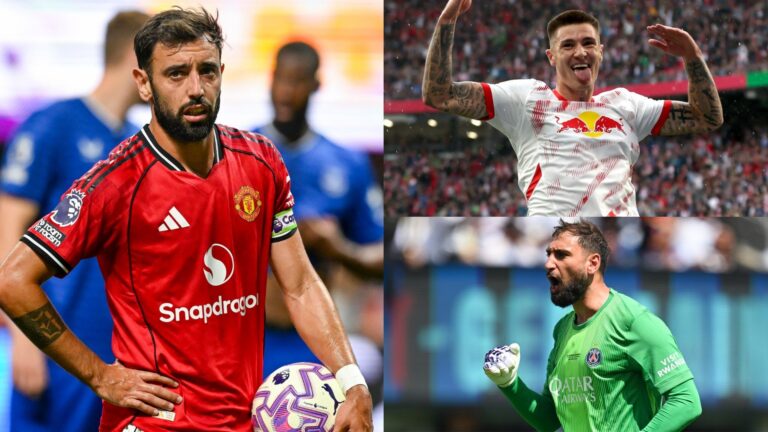أوستن، تكساس – The first thing Gio Saverese remembers is the noise. There were nearly 80,000 fans at Giants Stadium on July 15, 1996, when the then-MetroStars forward took the field in the 42nd minute. It was the first MLS All Star Game. And the crowd was into it.
"As soon as they said my name there was a big clap," he recalled.
Saverese rewarded the fans. He scored a crucial second goal to equalize for the Eastern Conference against their Western counterparts. Steve Pittman buried the winner with two minutes to go. Saverese’s team had done it.
Back then, the win meant a lot. Major League Soccer was still in its infancy. The ASG, back then, was a mimicry of the kind of thing the NBA, NFL and MLB did every year. This was an honor to be selected, an honor to play in, and a must win game – especially once the competition got going.
"Your DNA always gets competitive, yeah. And the more that you’re in the game, the more that you want to do well. And then it gets a little bit choppy," Saverese said.
Fast-forward 30 years, and it’s different. MLS had tweaked the format over the years, going from East-West faceoffs to clashes against European teams, to, more recently, matchups with the best Liga MX has to offer. And now, although the format has struggled for consistency players maintain that the significance of being named an All Star isn’t lost.
"It’s an honor," Cincinnatti FC’s Evander said. "It says that all you’ve been doing all season is working. You’ve been selected to play among the best players in the league, and that really means something."






أوستن، تكساس – The first thing Gio Saverese remembers is the noise. There were nearly 80,000 fans at Giants Stadium on July 15, 1996, when the then-MetroStars forward took the field in the 42nd minute. It was the first MLS All Star Game. And the crowd was into it.
“As soon as they said my name there was a big clap,” he recalled.
Saverese rewarded the fans. He scored a crucial second goal to equalize for the Eastern Conference against their Western counterparts. Steve Pittman buried the winner with two minutes to go. Saverese’s team had done it.
Back then, the win meant a lot. Major League Soccer was still in its infancy. The ASG, back then, was a mimicry of the kind of thing the NBA, NFL and MLB did every year. This was an honor to be selected, an honor to play in, and a must win game – especially once the competition got going.
“Your DNA always gets competitive, yeah. And the more that you’re in the game, the more that you want to do well. And then it gets a little bit choppy,” Saverese said.
Fast-forward 30 years, and it’s different. MLS had tweaked the format over the years, going from East-West faceoffs to clashes against European teams, to, more recently, matchups with the best Liga MX has to offer. And now, although the format has struggled for consistency, players maintain that the significance of being named an All Star isn’t lost.
“It’s an honor,” Cincinnatti FC’s Evander said. “It says that all you’ve been doing all season is working. You’ve been selected to play among the best players in the league, and that really means something.”
That first fixture was a wonderful act in brand building. MLS designed it cleverly. They made the ASG part of a high-profile doubleheader. First, was the East vs West. After that, came البرازيل'س وطني team against the rest of the world.
That fixture featured some ridiculous names. Roberto Carlos, Rivaldo and a teenager named Ronaldo Nazario all played for the Selecao. The “rest of the world XI” didn’t do too badly either, fielding Marcel Desailly, Lothar Matthaus, Jurgen Klinsmann, and reigning Ballon d’Or winner George Weah. Brazil won, 2-1. Saverese, just a year removed from playing for the Long Island Roughriders, was starstruck.
“In the locker room, being with the Brazilian players, was a great experience,” he said.
In the years since, the specifics of the fixture have changed. In 1998, “MLS USA” played against “MLS World” (the Americans battered them, 6-1.) A return to the East-West format in 1999 brought a hectic, back-and-forth 6-4 West win. The 2001 iteration yielded a 6-6 draw – and no penalty shootout to decide a winner.
Then, they flirted with a European era. Fulham, تشيلسي, Celtic, West Ham, Man United, روما, بايرن ميونيخ, Tottenham, Arsenal, أتلتيكو مدريد, ريال مدريد and Juventus all, at some point, faced off against North America’s best.
And MLS competed. They beat Chelsea and Bayern, and lost narrowly to Juventus. And even in defeat, things were always respectable.
“I think everybody disrespects America. So they disrespect MLS, in my رأي. I wanted to go and show like, there are players here. We can play. We can hang with you guys, even if we lose, make it respectable,” Bradley Wright-Phillips said.
In 2024, though, the MLS-Liga MX format was resurrected. And it worked – even if MLS were handily seen off, 4-1. But it brought back a rivalry that American soccer, and MLS at large, has tried to cultivate.
“I like going up against المكسيك. I feel like it’s more country versus country. The U.S.-Mexico rivalry has been going on for so long. It’s a strong rivalry. It brings all of MLS together, instead of dividing into two,” Orlando City’s Alex Freeman, a first time All Star, said.
It’s something of a trend among the younger players getting their first taste of MLS action – especially those who have broken into the USMNT setup under Mauricio Pochettino.
“It is cool to kind of play against the Mexican League, just because I think it makes it a bit more competitive for us, because we’re representing the whole league, and they’re representing their league,” Max Arfsten said.
It has been a recognizable trend for some time. MLS has pushed hard to reinforce the rivalry. The كأس الدوري has been tinkered with on numerous occasions. This year, the competition has been outright reinvented, with 93 percent of the games set to be played between MLS and Liga MX teams up until the final. The ASG, then, is part of a movement.
The European view, though, is slightly different. There are always going to be differences between the European and American game. MLS exists in its own universe, in a different country, in a soccer culture that is still evolving. For those who have come from Europe, there’s almost a charm to an ASG.
It was something that Wright-Phillips experienced when he came to the league in 2013.
“I didn’t understand it. I wasn’t used to the American theatrics. So I didn’t care about it, but as soon as I got called into it. I was positive, really, it lets you know that you are like the best in your position,” he told بالجم.
That perception has stayed remained.
“They don’t have this in the UK, in Scandinavia,” Chicago Fire midfielder Philip Zinckernagel said. “But it’s awesome. It’s fun to go out and train with the best players, see some of the guys. It’s just good days.”
For some, it’s an honor previously they knew nothing about.
“At first I didn’t know what it was. I don’t know what it brings, what I have to do, and now I know, and now I’m really happy and thankful,” Marco Palisic of Orlando City said.
Others have just seen it as something to look forward to.
“As a European player, you don’t normally see things like this, wherever you play in Europe. But in MLS, it’s nice. And I’m just looking forward to it,” San Diego winger Anders Dreyer said.
There is perhaps a sense, too, that this could work in Europe – even if that means removing a certain sense of snobbery.
“Having it in Germany would be cool. It’s so competitive, like it’s a religion for a lot of fans. I think having an event where it’s more about entertainment and fun. A skills challenge, you know, could be a cool thing to have in Germany,” Nashville attacking midfielder Hany Mukhtar said.
Still, there has been some reluctance from some of the bigger names in the league to participate over the years. Zlatan Ibrahimovic made waves in 2018 by electing not to play in the game. The striker had played three times in nine days before choosing to sit out the league’s hallmark fixture. He was suspended for the next game – and made his feelings clear on the league’s decision.
“I think it is ridiculous, but yeah, no comments. They do whatever they want. I come from a different world, I come from the real world. It is what it is. I respect in the end, and I’m sorry for my teammates only that I could not help them in the game,” he said. “But yeah, people are interested in different things. They lose on it, and for me it doesn’t matter.”
There have been similar concerns this year. Lionel Messi was selected for the team, but did not report to training for the first two days ahead of the game. His Inter Miami teammate Jordi Alba was also a no-show. Head coach Nico Estevez admitted that he didn’t know if the eight-time Ballon d’Or winner would be available for selection or not.
“That’s a question for his club. I just coach and use the players I’m given. I hope so – I’m very optimistic and I hope he can be there,” he said on Monday.
Still, there remains a heritage to the event. Back in 1996, Saverese also made sure to celebrate his goal. It was a good one, too, Saverese delaying his run from deep, darting into the box, and tucking home from close range. He ran into the open arms of Carlos Valderrama, took in the moment, and looked up to notice 80,000 of his own cheering his name.
“[Valderrama] went to me. He just grabbed me. Started hugging me. All the guys came in. I was so proud because it was my stadium, where I played. It was a proud moment,” he said.
Things have changed. Goals are celebrated with a little less vigor. Few might have slid in between two defenders, toes outstretched, to poke home in the same way that Saverese did. Still, there remains meaning attached to the game. Yes, the format is imperfect. Yes, with the concerns around player welfare and tired legs, minutes have to be restricted.
More broadly, ASGs across sports are struggling for appeal.
But a competitive spirit remains. This may be a friendly, but those involved know that there will be eyes on them. A good performance against a new opponent could mean something.
“I think these games, being able to match up against direct opponents competing kind of for the same spots in the Mexican national team, I think the coaches are able to get a better grasp of what my level is and how I can match up against those guys. I think it’s a great opportunity for me to do well and show why I should be on that roster,” Sounders’ midfielder Obed Vargas said.
Meanwhile, the new selections, in particular, still want to win. And once a ball is kicked, The All-Stars will be going all-out.
“Being an MLS all star is one of the highest recommendations you can get in the league,” Vargas said. “.’m super proud of that.”


